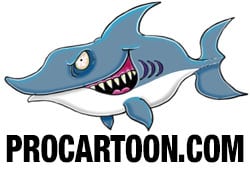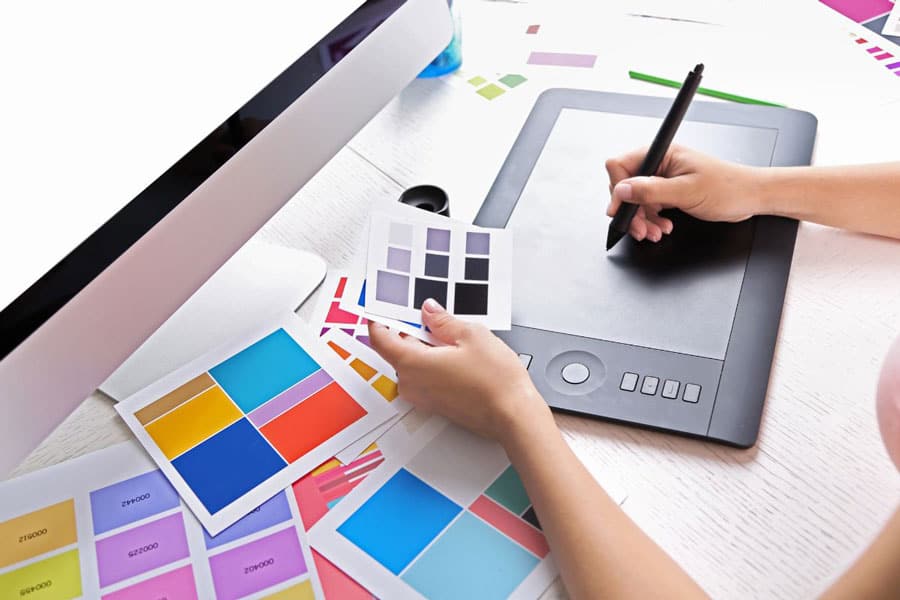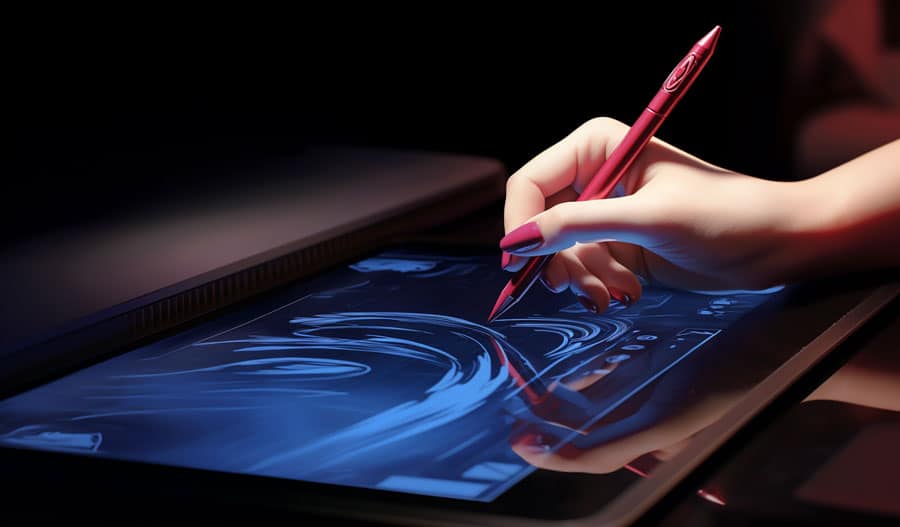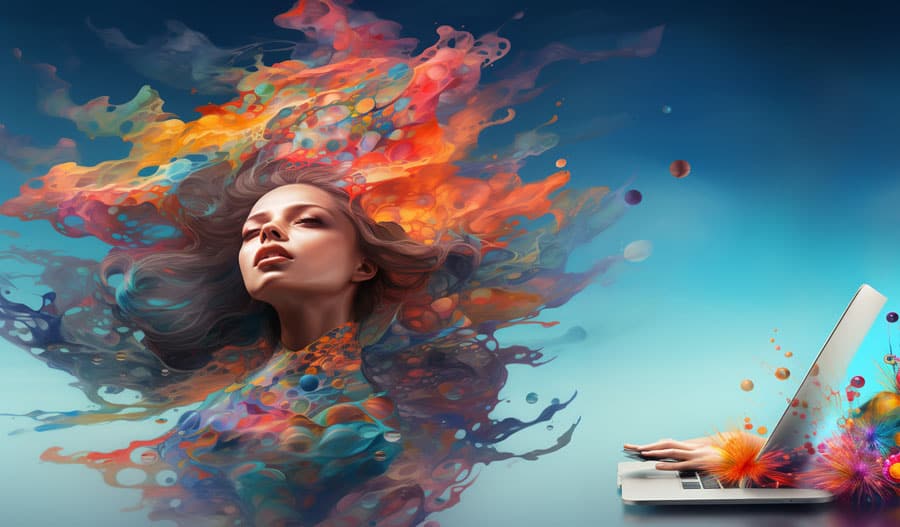Paper to Pixels: Embracing Digital Art with Drawing Tablets
Introduction to the Digital Art Revolution
Embracing a New Era of Creativity
Artistic expression is undergoing a significant shift with the transition from traditional to digital mediums. The adoption of graphics drawing tablets is not just altering the tools artists use but also transforming how art is conceptualized, created, and consumed.
Traditionally, artists relied on physical tools like canvases and brushes, which, while invaluable, imposed certain limitations. The advent of digital technology, especially graphics drawing tablets, is redefining these boundaries. Drawing tablets blend the tactile experience of drawing on paper with the expansive possibilities of digital art. Features such as pressure sensitivity and layering allow for greater control and flexibility, enabling artists to easily correct mistakes and experiment more freely.
This shift is more than a technological advancement; it represents a fundamental change in the artistic landscape. Artists are moving beyond the physical confines of traditional materials, embracing the vast potential of digital canvases. This transition to digital art is opening up a universe of new creative possibilities, encouraging artists to think, learn, and create in innovative ways.
The Genesis of Graphics Drawing Tablets
A Brief History
The history of graphics drawing tablets intertwines with the evolution of computer technology. The earliest versions of these tablets appeared in the late 20th century, primarily as devices to simplify graphic design and architectural tasks. These primitive models were bulky and lacked the sensitivity and precision of their modern counterparts. However, they laid the groundwork for the sophisticated tools we have today.
Over the decades, graphics tablets have evolved dramatically. In the 1980s and 1990s, they gained traction among digital artists and designers. Companies like Wacom, a pioneer in this field, revolutionized the market with their pressure-sensitive, battery-free pens and user-friendly interfaces. These advancements made digital art more accessible and appealing to traditional artists and novices alike.
How They Work
Understanding how graphics drawing tablets work is key to appreciating their impact on the art world. At their core, these devices function by translating the movement and pressure of a stylus (or pen) on a flat surface into digital strokes on a computer screen. This process involves sophisticated technology.
Most graphics tablets consist of a flat, touch-sensitive pad and a stylus. When the stylus touches the pad, it sends signals to the computer, which then replicates the movements as digital lines or strokes. Pressure sensitivity is a critical feature; it allows the tablet to detect the force with which the stylus is pressed against the pad, enabling artists to create lines of varying thickness and opacity, much like traditional drawing tools.
Newer models have integrated more advanced features like tilt recognition, multi-touch capabilities, and even the ability to draw directly onto a screen, providing a more intuitive experience that closely mimics drawing on paper. Wireless connectivity and portability have also become standard, allowing artists to work more freely and spontaneously.
The functioning of graphics tablets represents a beautiful synergy between technology and artistry. By converting physical movements into digital art, these devices offer a seamless transition from the tactile world of traditional art to the flexible, boundless realm of digital creativity.
Making the Switch: Paper to Pixel
Challenges and Opportunities
Transitioning from traditional art forms to digital ones can be daunting for many artists. The tactile feedback of paper and the physical interaction with materials like paint and pencil is a fundamental aspect of traditional artistry. When shifting to a digital canvas, artists often miss this physical connection. There’s also a learning curve associated with mastering digital tools and software, which can initially be overwhelming.
However, this transition is replete with opportunities. Digital art allows for greater experimentation without the fear of wasting materials. Undo and redo options, along with the ability to work in layers, offer artists the flexibility to explore creative ideas and techniques that would be impractical or impossible in traditional mediums. Additionally, digital art can be easily shared and distributed, opening up new avenues for artists to showcase their work and reach a global audience.
Skillset Adaptation
They are adapting to digital art requires both technical and creative adjustments. Artists must familiarize themselves with the functionalities of their graphics tablet and the associated software. It includes understanding different brush settings, learning how to manipulate layers, and mastering various digital effects.
Importantly, the core artistic skills — composition, color theory, and drawing — remain as relevant in the digital realm as they do in traditional art. The challenge lies in translating these skills to a new medium. Practice is key. As artists spend more time with their digital tools, the tablet becomes an extension of their hands, much like a brush or pencil.
A significant aspect of this adaptation involves minds. Embracing the possibilities of digital art while maintaining the essence of traditional techniques can lead to a unique blend of styles and aesthetics. Additionally, many digital art software offer customizable settings, allowing artists to tailor their digital environment to their preferences and workflow.
In essence, transitioning to digital art isn’t just about learning how to use new tools; it’s about reimagining one’s artistic process in the context of these new capabilities. It’s a journey that combines the foundational principles of art with the limitless potential of technology.
Essential Features of Graphics Drawing Tablets
Choosing the Right Tablet
Selecting the right graphics tablet is crucial to an artist’s digital journey. The market offers a wide range of digital drawing tablets, each with its set of features. Key considerations include:
Size: Tablets come in various sizes, from small, portable models to larger, desk-bound versions. The choice depends on the artist’s workspace, and the type of work they do. Larger tablets offer more drawing space but are less portable.
Pressure Sensitivity: This feature determines how well the tablet can mimic the pressure of a traditional pen or brush. Higher pressure sensitivity provides greater control over the thickness and opacity of lines, offering a more nuanced drawing experience.
Resolution: The tablet’s resolution affects the precision of the input. A higher resolution tablet can register smaller movements, allowing for finer detail.
Stylus Type: Some styluses require batteries or need to be charged, while others are battery-free. Artists may also consider the grip and feel of the stylus, as it significantly impacts drawing comfort.
Compatibility: Ensuring the tablet is compatible with the artist’s computer and preferred software is essential.
Integration with Software
The true power of a graphics tablet, is realized in its integration with digital art software. Programs like Adobe Photoshop, Corel Painter, and others offer a wide range of tools and features that complement the capabilities of the tablet.
Customization: Most software allows for extensive customization of brush settings and shortcuts, which can be tailored to match the artist’s workflow and style.
Features: Digital art software often includes features like layer management, various digital brushes, and effects, which, when used with a graphics tablet, significantly expand creative possibilities.
Learning Curve: Familiarizing oneself with software can be as important as mastering the tablet itself. Many artists benefit from online tutorials, courses, or community forums to learn new techniques and tips.
A graphics tablet combined with the right software opens up a world of possibilities. This combination allows artists to experiment with techniques that would be impossible or impractical with traditional mediums, such as digital painting, 3D modeling, and even animation.
Artistic Possibilities with Digital Mediums
Expanding Creative Horizons
Digital art, facilitated by graphics drawing tablets, opens up an expansive array of creative possibilities that go beyond the capabilities of traditional mediums. Key aspects include:
Unlimited Experimentation: The digital canvas allows artists to experiment without fear of wasting materials. Features like layers, undo/redo options, and a vast array of digital brushes and tools enable artists to try new techniques and styles with ease.
Blending of Mediums: Digital art blurs the lines between different art forms. Artists can easily combine painting, photography, and graphic design elements in a single piece, something that is much more challenging with traditional mediums.
Color and Light: Digital platforms offer an extensive range of colors and the ability to manipulate light and shadow with precision, enabling artists to achieve effects that are difficult to replicate with physical paints.
Accessibility and Sharing: Digital art can be easily shared online, allowing artists to reach a broad audience. It also makes art more accessible, as artists can create without needing a large physical space or expensive materials.
Real-Life Artist Experiences
Many artists who have transitioned from traditional to digital mediums have found the experience transformative. Some note the initial challenge of adapting to a non-physical medium but also speak of the freedom and flexibility digital art provides. Artists often mention the ability to work more efficiently, make corrections easily, and explore styles and techniques that were previously inaccessible.
For instance, illustrators working in the publishing industry have found that digital art allows for quicker revisions and easier collaboration with clients. Similarly, concept artists in the gaming and film industries benefit from the ability to quickly produce and modify complex designs.
The experiences of these artists highlight not just the practical advantages of digital art, but also its potential to open new doors in terms of creativity and career opportunities.
Educational and Professional Implications
Digital Art in Modern Education
Incorporating digital art into educational curriculums is a testament to its growing importance. Schools and universities are increasingly recognizing the need to equip students with digital art skills, reflecting the shift in the creative industry’s demands.
Skill Development: Learning digital art helps students develop a range of skills, including design thinking, creative problem-solving, and technical proficiency in digital tools.
Interdisciplinary Approach: Digital art education often combines elements of art, technology, and multimedia, encouraging an interdisciplinary approach to learning.
Career Preparation: As the creative industry evolves, proficiency in digital art becomes essential. Educational institutions are preparing students for careers in fields like graphic design, animation, game design, and digital marketing.
Career Opportunities in the Digital Age
The transition to digital art has opened up a myriad of career opportunities across various industries:
Graphic Design and Advertising: Professionals with digital art skills are in high demand in the advertising and marketing sectors, where they are responsible for creating everything from web graphics to print ads. You will see this shift in how the world of advertising has changed, with content displayed on digital signs as well as traditional billboards.
Animation and Game Design: The film and gaming industries heavily rely on digital artists for character design, environment creation, and animation.
User Interface/User Experience (UI/UX) Design: With the proliferation of apps and websites, there is a growing need for digital artists in designing user-friendly interfaces.
Freelance Opportunities: Digital art skills enable artists to take on freelance work, offering flexibility and the opportunity to work on a diverse range of projects.
Emerging Fields: Virtual reality (VR), augmented reality (AR), and artificial intelligence (AI) in art are emerging fields offering new and exciting opportunities for digital artists.
The digital art landscape is not only creating traditional career paths but is also paving the way for new roles that merge art with technology, emphasizing the dynamic nature of this field.
Conclusion: The Future of Art in the Digital Realm
Embracing Change while Honoring Tradition
Stand at the intersection of traditional and digital art emphasizes the need to embrace the digital without discarding the past. Digital art is not a replacement but an evolution, expanding the artist’s toolkit while preserving the essence of human experience and emotion. The challenge for modern artists is to balance technological advancements without losing the authenticity of traditional methods.
The Ever-Evolving World of Art
Looking ahead, the future of digital art is both exciting and unpredictable. Emerging technologies like AI, VR, and AR shape new artistic expressions, pushing boundaries and offering unprecedented tools. As digital art becomes more accessible, a democratization of art creation and consumption is likely, fostering diverse voices and perspectives globally.
In conclusion, the journey from paper to pixels is not just a transition; it’s a transformation that is continually reshaping the world of art. As artists and art enthusiasts, our task is to embrace this change, explore the vast possibilities it presents, and continue to tell our stories through whatever medium resonates with our vision and our times.



